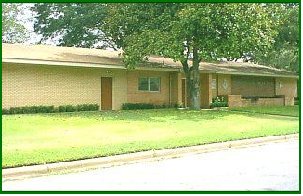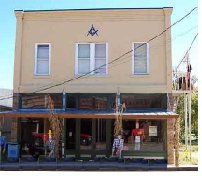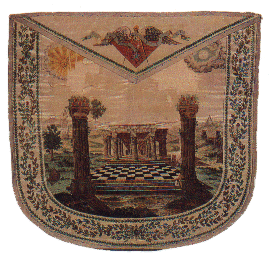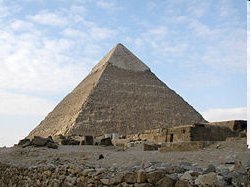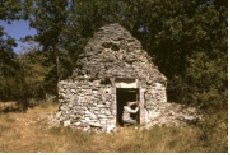

Hempstead Masonic Lodge #749 AF & AM
 Hempstead, Texas Circa 1907 |
|
Page II | |
|
This Small Town Texas Mason's E-Magazine is an independent publication, not connected with any state Grand Lodge or individual Blue Lodge. It was created for the enlightenment and a better understanding of Freemasonry for Masons and non-Masons alike and as title sugests, it does feature a small town Texas Masonic Lodge and a story of Texas Masonic history in each issue Any part of this site may be reproduced and used for that purpose on other Masonic web site or Lodge newsletters.
A very sincere effort was made to avoid using any copyrighted material, without permission or giving credit to the author, in the creation of this web site. If you discover something that is yours, without giving you due credit, please let me know and due credit will be given or the item will be replaced.
All material in this site may be used to educate everyone, Freemasons and non- Freemasons alike about Freemasonry and for the advancement of Freemasonry. Corky
|
Hempstead #749, A Small Town Texas Masonic Lodge
The Beginning May Not Be What You Think
Masons Play Part in Texas Heroes
The Great Pyramid And
Freemasonry
|
|
Page IV | |
|
Author unknown
Many years after the Civil War had ended, a son of Brother L. J. Williams of Downsville Lodge No.464, N.Y., reported in Lodge of a story his father had told him of a Masonic experience he had. When the war broke out, the Entered Apprentice and the Fellow-craft degrees had been conferred on him in New York. He went out in defense of his country without having been raised to the Sublime Degree of Master mason. It was his misfortune to be taken prisoner of war while at or near Savannah, GA. While he lay in his Southern prison cell, he communicated through some of his friends in the North. His Lodge in New York, through proper officials, got in touch with Zerubbebel Lodge in Savannah, and made the request that as a favor to the Brethren of the North, confer the Master Mason Degree on the Fellow-craft, Brother L. J. Williams.
One night, my father was taken from his prison cell and conducted to a Lodge Room. It was a remarkable occasion. He wore his bedraggled uniform as a token of his sympathy with the cause of the North. All the chairs were filled with Confederate officers. He was surrounded by men who wore the uniform of an army who was on the opposite side of a struggle to the death, but they were Brethren and there he was raised a Master Mason and acclaimed a friend and Brother by his enemies.
But the more significant feature of the story was yet to follow. One night my father escaped from his prison cell and joined up with his company. I have visited Savanna since then and looked up the records of that night in question.
On the same page that records the fact that the degree was then exemplified on my father, there was this brief annotation: “On this night Brother Williams escaped from prison.” I have talked with my father about his “escape” and he always smiled peculiarly. You may put it that way he told me, but it wasn't an escape, strictly speaking. For on that night, men came to my prison. The put me in a boat and carried me off some distance and deposited me on some neutral soil between the lines. From there I made it back to my friends.
Who my rescuers were, I have never learned. It is their secret and it has never been disclosed. But in my mind I know exactly to whom I may thank for my “escape.” His name is Hiram.
| |
|
Adam was hanging around the garden of Eden feeling very lonely.
So, God asked him, 'What's wrong with you?'
Adam said he didn't have anyone to talk to.
God said that He was going to make Adam a companion and that it would be a woman.
He said, 'This pretty lady will gather food for you, she will cook for you, and when you discover clothing, she will wash it for you.
She will always agree with every decision you make and she will not nag you, and will always be the first
to admit she was wrong when you've had a disagreement.
She will praise you!
She will bear your children. and never ask you to get up in the middle of the night to take care of them.
'She will NEVER have a headache and will freely give you love and
passion whenever you need it.'
Adam asked God, 'What will a woman like this cost?'
God replied, 'An arm and a leg.'
Then Adam asked, 'What can I get for a rib?'
Of course the rest is history............!!!
|
|
Page V |
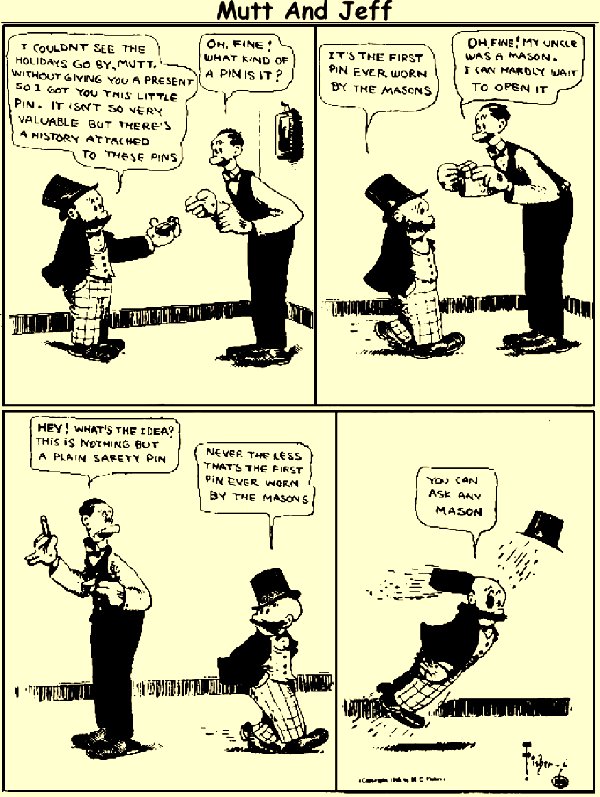
|
|
Page VI |
WHAT YOU THINK SIX HUNDRED YEARS OF CRAFT RITUAL BY W. BRO, HARRY CARR P.J.G.D. (E.C.)
Brethren, I travel enormous distances in the course of my lecture duties and the further I go the more astonished I am to sea how many brethren believe, quite genuinely, that our Masonic ritual came down straight from heaven, directly into the hands of King Solomon. They are all quite certain that it was in English, of course , because that is the only language they speak up there. They are equally certain that it was all engraved on two tablets of stone, so that, heaven forbid, not one single word should ever be altered; and most of them are quite certain that King Solomon, in his own lodge, practiced the same ritual, as they do in theirs.
But, it was not like that at all, and tonight I am going to try to sketch for you the history of our ritual from its very beginnings up to the point when it was virtually standardized, in 1813; but you must remember, while I am talking about English ritual I am also giving you the history of your own ritual as well. One thing is going to be unusual about tonight’s talk. Tonight you are not going to get any fairy tales at all. Every word I utter will be based on documents which can be proved, and on the few rare occasions when, in spite of having the documents, we still have not got complete and perfect proof, I shall say loud and clear; We think … or We believe ..., Then you will know that we are, so-to-speak on uncertain ground; but I will give you the best that we know. And since a talk of this kind must have a proper starting point, let me begin by saying that the story did not begin in Egypt, or Palestine, or Greece; or Rome. THE FIRST MASON TRADE ORGANISATION IN LONDON It all started in London, England, in the year 1356, a very important date, and it started as the result, of a good old-fashioned demarcation dispute. Now, you all know what a demarcation dispute is, When the boys in a trade union cannot make up their minds who is going to knock the nails and who is going to screw the screws that is a demarcation dispute. And that is how it started, in 1356, when there was a great row going on in London between the mason hewers; the men who cut the stone and the mason layers and setters, the men who actually built the walls. The exact details of the quarrel are not known, but, as a result of this row, twelve skilled Master Masons, with some famous men among them, came before the mayor and aldermen at Guildhall in London, and, with official permission, drew up a simple code of trade regulations. The opening words of that document, which still survives, say that they had come together because their trade had never been regulated in such form as other trades were. So here, in this document, we have an official guarantee that this was the very first attempt at Masonic trade organization and, as we go through the document, the very first rule that they drew up gives a clue to the demarcation dispute that I was talking about. They ruled, That every man of the trade may work at any work touching the trade if he be perfectly skilled and knowing in the same. Brethren, this was the wisdom of Solomon! If you knew the job, you could do the job, and nobody could stop you! If we only had that much common sense nowadays in England, how much better off we should be. The organization that was set up at that time became, within twenty years, the London Masons Company, the first trade guild of the masons and one of the direct ancestors of our freemasonry of today. This was the real beginning. Now the London Masons Company was not a lodge; it was a trade guild and I ought to spend about three weeks, if you would only stay with me that. long, trying to explain how lodges began. The guilds were town organizations. In those days - I am speaking of the 1390’s and 1400’s - the guilds were favored by the towns because it was customary for each of the trades to elect two representatives who became members of the Common Council, all together forming the city government. But the mason trade did not lend itself to town organization at all. Most of their main work was outside the towns - the castles, the abbeys, the monasteries, the defense works, the really big jobs of masonry were always far from the towns. And we believe that it was in those places, where there was no other kind of trade organization, that the masons, who were engaged on those jobs for years on end, formed themselves into lodges, intimidation of the guilds, so that they had some form of self-government on the job while they were far away from all other forms of trade control.
|
|
Page VII |
Continued From Page 6
THE FIRST LODGES
The first actual information about lodges comes to us from a collection of documents which we know as the Old Charges or the Manuscript Constitutions of masonry, a marvelous collection. They begin with the Regius Manuscript c. 1390; the next, the Cooke Manuscript is dated c. 1410 and we have 130 versions of these documents running right through to the 18th century. The oldest version, the Regius Manuscript, is in rhyming verse and differs, in several respects, from the other texts, but, in their general shape and contents they are all very much alike. They begin with an Opening Prayer, Christian and Trinitarian, and then they go on with a history of the craft, starting in bible times and in bible lands, and tracing the rise of the craft and its spread right across Europe until it reached France and was then brought across the channel and finally established in England, shocking bad history; any professor of history would drop dead if he were challenged to prove it; but the masons believed it. This was their guarantee of antiquity and respectability. Then, after the history we find the regulations, the actual Charges, for masters, fellows and apprentices, including several rules of a purely moral character, and that is all. Occasionally, the name of one of the characters changes, or the wording of a regulation will be altered slightly, but all follow the same general pattern. If you would like to read the rest of this article please go to, http://www.iowamasoniclibrary.org/webforms/ Downloads/Six Hundred Years Of Craft Ritual.pdf This a small part of a talk given by Worshipful Brother Carr give when he made a visit to the Long Beach Scottish Rite in the early 1970's. Brother Harry Carr was a Past Master and long time Secretary of Quatuor Coronati Lodge No. 2076, London, England, which is known as the "Premier Lodge of Masonic Research." |
by Roger Firestone
Another example that came up recently was a discussion of the Blazing Star. This is one of the "ornaments" of a Lodge, introduced in the Entered Apprentice degree. A non-Mason insisted that,
* Masons "worship" the Blazing Star Here are the facts: * Isaiah 14 is a chapter with a prophecy against the kings of Babylon, specifically Nebuchadnezzar. The quoted verse is rendered, in my Bible, "Day-star, son of the morning, how hast thou fallen?" In this passage, the prophet alleges that the arrogant king of Babylon has thought himself as glorious as a celestial body, but that the destruction of the kingdom of Babylon shall surely bring him back to earth. The word here translated as "day-star" is, in Hebrew, "heyleyl," and refers to the planet Venus. The ancient Greeks and Romans both used different words for this planet when it appeared in the morning sky from its appearance in the evening sky. The Greeks called it Hesperus in the evening and Phosphorus in the morning; the Romans called it Venus in the evening and Lucifer in the morning. Hence, the translation of the Hebrew, via Greek, into Latin (i.e, from the Hebrew to the Septuagint to the Vulgate), naturally would introduce the word "Lucifer" as the correct Latin translation of the Hebrew. * The term "Lucifer" as a name for the Devil or Satan, cannot be traced any farther back than the Middle Ages, and was only widely popularized by Milton's epic poem, "Paradise Lost." * The Minnesota Masonic Manual (as one source on the lectures of Masonry) clearly identifies the Blazing Star as emblematic of the Star of Bethlehem, hardly a "Satanic" reference. It has nothing to do with the planet Venus. * The Blazing Star is mentioned for about 30 seconds in a lecture some 20-30 minutes in length (it depends on jurisdiction) in the first degree of Masonry only, an amount of attention that could scarcely be described as "worship." * The "false dawn" is not heralded by Venus, but is a phenomenon produced by the Zodiacal Light, a band of dust lying in the plane of the Earth's orbit, which most prominently appears as a sky glow before sunrise in the fall (the false dawn) and after sunset in the spring, but can only be observed under ideally dark conditions. |
|
Page VIII | |
Masons Play Part in Texas Heroes
The decimation took place by the drawing of black and white beans from a small earthen mug. The white ones signified exemption, and the black death. One hundred and fifty-nine white beans were placed in the bottom of the mug, and seventeen black ones placed upon the top of them.
A little over a year ago, La Grange's LaFayette Masonic Lodge secretary Norval Cummings did some digging at the lodge, and found the lodge minutes from 1848 in a cardboard box, under the stage in the old lodge building, and had been destroyed by silverfish. The goal in searching for the 1848 records was to determine if the Masonic Lodge had opened "A Lodge of Sorrow" and conveyed Masonic rites to those Masons among the men buried there that day. Although it could not be proved with lodge minutes, very good evidence that the Masons did perform the service is to be found in newspaper reports of the event.
Regarding the proceedings that took place in La Grange 158 years ago, the Sept. 28th, 1848, "Democratic Telegraph" newspaper, published in Houston, reported:
"The hearses containing the remains, escorted by the military, under the command of Col. Martin K. Snell, of this city, who, being a soldier of the revolution, and early identified with the fortunes of the country, was kindly tendered the Command on the occasion; Pall bearers, then followed successively, the relatives and friends of the deceased; Masonic Fraternity, Officers of the State, County and citizens and strangers."
Later, regarding the end of the day's events, it states: "... the procession then moved on to town, The Masonic fraternity were escorted to the lodge by the military....."
It is very clear that Masons played an important role in the ceremonies at Monument Hill that day in 1848. There were many, many Master Masons involved in the Mier and Dawson Expeditions.
The two leaders of the Mier Expedition, William S. Fisher and Ewin Cameron, were both Master Masons, as were several of the martyred men, including Patrick Usher and William B. Middleton, who died on the march to Mexico City, and James N. Torrey of Rocky Mount Masonic Lodge No. 63, who drew a black bean at Rancho Salado, and whose body was among those re-buried that day.
There were 33 known Masons in the Mier campaign, including other notable Masons such as Thomas Jefferson Green, James Burke, Henry Clay Davis, G.W. Hancock, A.C. Hyde, William S. Oldham, and James C. Wilson, Virgil H. Phelps, John L.D. Blackburn, Orlando C. Phelps, Richard Brown, James Calvert, Freeman Douglass, William Dunbar, Alfred S. Thurmond, and Joseph D. Watkins.
Research is ongoing to identify the Masons among the Dawson Expedition, and what Masonic role Sam Houston took that September day in 1848. As the highest ranking Masonic leader in attendance that day, it is likely that he conducted, or at least participated in, the Masonic portion of the events.
The Masonic Funeral Service was performed by Frontier Lodge September 16, 2006 at Monument Hill in La Grange at the Heroes Day event, was based on the same ritual that was in common usage in 1848 in Texas. Aprons worn by the participants were patterned after aprons from that era that are on display at the Grand Lodge of Texas Museum.
. |
|
Page IX | ||
|
Every Mason perceives the teachings from the rituals in his own way, getting the understanding which will satisfy his mind and consciousness, letting the others do the same. This is an example of Masonic tolerance, tolerance being one of the fundamental principles of the Craft, dating even before the Constitutions of Anderson in 1723 and 1738, that forbade any
There is a very long tradition regarding the Church-Masonry relationship, which starts from the old times, from Templars and Rosicrucians. It was established a very strict code, a Christian Masonry. The Masonic tolerance shows that God doesn't have to be named Mohamed or Jesus Christ. He is the Great Architect of the Universe. He is in our heart. He is our support in our attempt to order the chaos. If God is not inside us anymore, the chaos shows up.
The Masons, as well as the priests, filled the Communist prisons. This fact is specially evoked. The Orthodox Church has always been very close to Masonry. A good example is the Patriarch Miron Cristea, an outstanding historical personality, who was a Mason.
In those countries in which the prevalent religion was the Protestant Christianity, due to the social origin of most of its members, the theoretical and modern Masonry developed as an eminently conservative force, close related to the ecclesiastic and political power of that time, without being persecuted by one of these powers or hindered in its development and consolidation.
On the contrary, in the Latin countries - a world ruled by the Catholic Church and absolute monarchies -, the theoretical Masonry was born and grew like a "legitimate daughter" of the citizens thirsty for freedom, of the professors with intellectual anxieties, of the revolutionists-forerunners of the current democracy. We can assert that Latin Freemasonry was born from the intellectuals, from those who were acknowledged as encyclopedists, free-thinkers and later on as liberals.
The religion, built on that "homo-religiosus" of Mircea Eliade, intrinsic to the human condition, develops continuously, and finds its social use in the Masonic structures by outlining one of the functions that now in Romania remain on the second level even as part of the "national" Church.
Whatever might be, there is an ideological climate between Masonry and religion, especially at the irreconcilable level of Protestantism or Roman-Catholicism.
That's why we believe that a differentiation between the two establishments is possible at the ontological level: religion constitutes itself in the archetype of each individual, and Masonry is the embodiment of religious archetypes from the individual's development, that differs from man to man, according to his cultural and educational instruction.
To state that religion is incompatible with Masonry and that the role of Masonry has nothing to do with it, is a completely unacceptable and groundless fact. The two can co-operate, can function, and together can develop the spirituality of every man who joins Masonry.
|
|
Page X | ||
By: Michael L. Segall
At my grand lodge (France) we are doubling our membership every dozen years or so, and have never simplified nor reduced the ritual to cater to candidates. Actually, it's unchanged since we removed "Long Live .the King!" more than a century ago. We've kept our old obligations and penalties, and if some outsider wants to misinterpret them, it's his problem. Masonic education is at an extremely high level which, I'm afraid, could hardly be imagined elsewhere. Becoming a Mason is a challenge and a sought-after achievement, worth quite a few sacrifices. Our main pro1lem is building enough lodge rooms. Our current ones are filled every day of the week by meeting lodges. We have done for nearly three centuries the opposite of what is currently attempted in the USA, and we've done it with great success. Here is the recipe of the Grand Lodge of France where, it should be added, attendance in lodge is about 70 percent of members at every meeting.
We consider that Masonry is the means to make good men, better. All other purposes, developments, and results are simple consequences of this main goal. To this end it is obvious that only men who we consider capable of improving themselves are admitted. We are not interested in numbers but quality. Unlike the USA where, since the Morgan affair, lodges meet in the third degree, our lodges open and do most of their business (except passings and raisings) in the Entered Apprentice degree. This allows entered apprentices to attend lodge from day one. It eliminates any need to hurriedly pass and raise them so they don't disappear before they may attend Lodge. Our obligations include the promise to regularly attend meetings, with rare exceptions (illness, travel, professional, or family obligations), and then a written excuse (or phones to the lodge master) is required. Insofar as ritual is concerned, we do not think there is any need to modify it to suit the changing winds of modernity or political correctness (which is only a minor issue here)~ Those who do not like our penal clauses, rituals, proficiency, Masonic education, customs, or traditions don't have to become Masons. We never have mass initiations or "zoom" degrees, where no one really gets initiated, or degrees performed by professional teams. We make all initiations, passings, and raisings personal warm experiences: of fraternity and brotherly love, performed by the officers of the lodge. We allow, no more than five candidates per ceremony as required by Anderson's Constitutions, so that the new members never forget the experience and its meaning. We try to make each meeting interesting by having, every time, a lodge member (or a visitor) present an original, interesting paper or lecture on a Masonic-related subject, followed by a disciplined discussion of the subject, led and moderated by the Master. You might be surprised to hear that our proficiency is short and simple, only covering the signs, words, grips, steps, and a number of questions and answers very similar to yours. Masonic education, although it doesn't imply any rote learning, more than compensates for this.
The junior warden and senior warden respectively, take responsibility for the education of the entered apprentices and fellow crafts. Older members of the lodge educate the Master Masons. The preparation of three original papers on imposed Masonic subjects and the presentation and defense of one of them in lodge (like a thesis in a university) is he precondition for being admitted to the Fellow Craft, and then the Master Mason degree. I will admit that all this sounds difficult. Surprisingly, it's not. It's elating and inspiring. It makes attending lodge a sought-for pleasure. We have had sick Brothers demand to be brought in on a stretcher so they wouldn't miss a particularly interesting paper or lecture. It seems to attract and motivate rather than repel candidates. It really makes good men better. |
|
Page XI |
A mason who had just been installed as Master of his lodge and was duly attending all the functions he could, was having a hard time with his wife, who said, "All those masters-in-office have to do is click their fingers and you would be there wouldn't you? I wish I was a master!"
After due thought, he said, "So do I dear, we swap them for a new one every year!!"
The Unfit Brother
One evening after a brother had been a guest at an installation, he had partaken of too much wine, and his host was very worried, as he did not want him to drive home, which was some distance away, in his present state. So, he insisted that he stay the night at his house, and travel home the next morning. And, after much persuasion this is what he did.
When he got home the next morning, his wife was furious with him because he had forgotten to phone, and she did not believe his story about staying with a brother because of the state he was in, but wondered if he had been with another women. However, she pretended to believe him, by asking how the ceremony had gone, and asked how many other brethren had been there, and all the regular questions that wives do ask. He told her that it had been an excellent Lodge meeting and that 65 brethren had turn up etc. However, at the next Lodge meeting, when the secretary rose to read out correspondence, he read a letter from the wife asking if the brother with whom her husband had stayed the night after the last lodge meeting, would please write to her and confirm his story that he had stayed the night at his house because he was unfit to drive home.
The next day in the post she received 64 letters.
The New Entered Apprentice
A young Entered Apprentice was being tested on his proficiency. After going over the signs and passwords, he looked at his tester and asked, "I noticed several of the older members sticking their fingers in their ears and whistling. What does that sign mean?"
"That's not a sign," his tester said, "Those are Past Masters adjusting their hearing aids."
Changing A Light Bulb
Q: How many Masons does it take to unscrew a light bulb?
A: It's a secret!
Classes Of Masons
A new initiate returns home to his wife who is naturally curious to know what went on. The conversation goes something like this:
Changing A Light Bulb
Q: How many Masons does it take to screw in a light bulb?
A: Three. One to screw it in, one to read the minutes of the previous light bulb replacement, and one to sit on the sidelines and complain that this wasn't the way they used to screw in light bulbs.
Very Selective Lodge
Have you heard of the Lodge that was holding its meetings in the ball room of the local hotel while its building was undergoing renovations? One night a traveling salesman asked the desk clerk who all those men going into the room were. The desk clerk replied "Oh, those are the Masons." The salesman said, Oh, I've always wanted to join that lodge. Do you think they would let me in?" "Oh, no," said the clerk. "They're awful exclusive. Why, you see that poor guy standing outside the door with a sword? He's been knocking for six months and they still won't let him in!!!"
The Football Game
A man is walking through the recreation ground of his local park when he notices a huge fight in full fury on the football field he is passing. "What's going on?" he asks a spectator watching from the side-lines. The other replies "It's a match between the Masons and the Knights of Columbus." "What's the score?" asks the first man. "I don't know, it's a secret."
The Lecture
There's a man, walking down the street at 1am in the morning and he's very drunk. A policeman stops him and asks: Where are you going in that condition?
Man: II'mm on mmyy waayyy to a lectttuurre on FFreemmassonnrrry.
Officer:Where can you possibly get a lecture on Freemasonry at this time of night? Man: Frromm mmyy wifffe, wwhenn I gget homme! |
|
Page XII | ||||
by Ken Klein
As the eighteenth century drew to a close, the imminent explosion of Egyptological studies was gathering momentum. One last, curious episode in this story should be noted before moving on, however, and that is the rise of Freemasonry as a political and cultural force.
Most of the major figures of the Enlightenment were either masons or influenced by Freemasonry; and the Masons were all Egyptophiles, in some cases claiming that they drew their traditions from secret Egyptian texts, in other cases actually asserting an unbroken lineage back to Egyptian priesthoods. The Masons establishing the Egyptian temples as their lodges used the Egyptian symbols as the decorum on their walls; even using the hieroglyphs which were a highly misunderstood language. They also included phenomena such as the pyramid and the "all seeing eye" on the reverse seal of the U.S. dollar bill. That Masonic Freemasonry flourished under the imperial rule of Napoleon is a matter of conspiratorial theory and record, but it remains uncertain that he himself was a Mason. Nonetheless, Napoleon was know to use Masonic - Egyptian emblems in his protocols. On May 19, 1798 the time was ripe for Napoleon to spread the theory of Egyptophila on a massive scale. Napoleon set sail from southern France for Egypt to launch his campaign and thus his invasion of the land of the Pharaoh's. This became one of the most important dates in the history of the Great Pyramid. About the Author: About the author: Ken Klein is a documentary film producer and researcher. His examinations have brought to light secrets surrounding the Great Pyramid. For a free tour of the Great Pyramid get his free Great Pyramid walk though video.
by Floren L. Quick
Now and again, today - fortunately not too often - we find a modern equivalent of the operative imposter. One such is the Mason who manages a place in an officer's line with little or no effect of his own to deserve it. With only that exertion that is necessary to maintain his place, he continues to advance in line until he receives the jewels and honors that he prizes so highly. But he does not know the Constitution, and he does not understand the traditions and dignity of the Craft. As a presiding officer, his vocal ability is more noteworthy than his executive ability; and when his term is ended, he is seldom seen until another honor or prize appears to be within his grasp.
He is a contemporary builder who works without the benefit of the mortar of real enthusiasm or accomplishments. His structure is liken unto the rough stone wall, having little beauty of value. He is the cowan of modern speculative Masonry.
He is to be pitied, for he is a Masonic failure. His honors are shallow. Bringing no interest to his position, he received little of the satisfaction and respect that belong to the real Master. Masonry has failed to reach him with a clear understanding of those marks of true devotion which she has to offer. He never knows the opportunities that the Craft makes available to those who diligently seek them. He misses the opportunities that the Craft makes available to strive for a just and worthy cause. He misses the opportunity for continuing fellowship and friendship. He misses the opportunity for loyalty and devotion. He misses the opportunity for development of his executive, intellectual and oratorical abilities. And most of all, he misses the opportunity for service - to God - to his community - and to his fellow man. These are the jewels that Masonry has to offer, but in his quest for position and honors, the modern cowan misses them. Like the operative cowan, he does not have the Word. |
|
|
